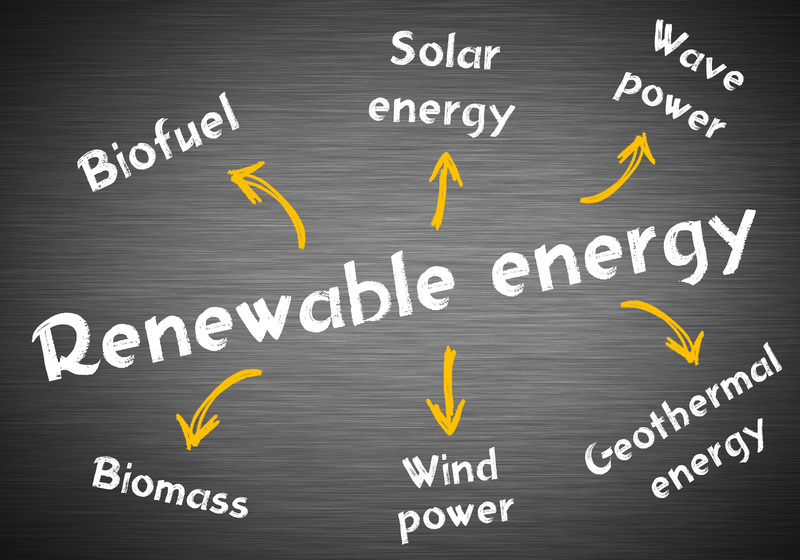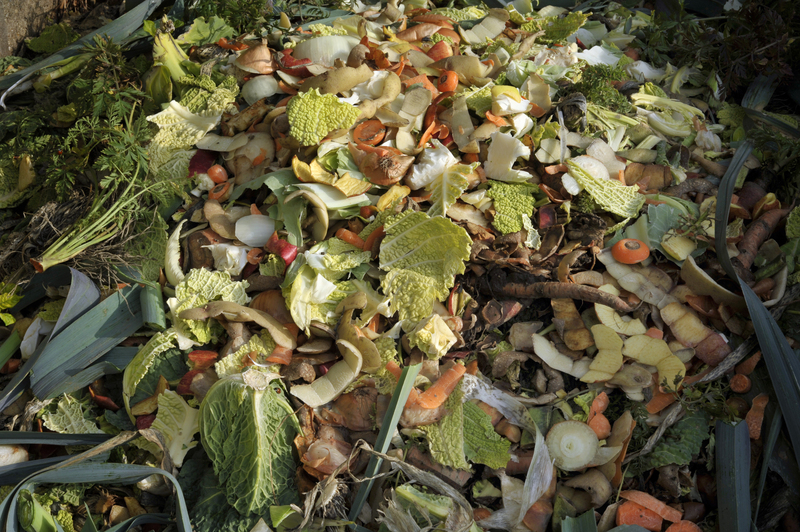Environmentally Conscious Ways to Cut Home Waste
Posted on 18/09/2025
Environmentally Conscious Ways to Cut Home Waste: A Comprehensive Guide
Are you looking to reduce your household waste and live a more sustainable lifestyle? With climate change and pollution on the rise, environmentally conscious individuals are searching for ways to cut waste at home and make a positive impact on the planet. From food scraps to plastic packaging, the average household generates a significant amount of waste each year. But the good news is that with simple changes and smart habits, you can greatly minimize your home's environmental footprint.
In this detailed article, discover the most effective, environmentally friendly methods to cut down waste at home. You'll find practical tips, actionable steps, and long-term strategies for every household--no matter your budget or lifestyle. Start today, and watch your trash bin shrink while your green credentials grow!
Why Is Cutting Home Waste So Important?
Before exploring eco-friendly ways to reduce home waste, it's crucial to understand the importance of this effort. The environmental impact of household waste goes beyond overflowing landfills. Improper disposal can:
- Contribute to greenhouse gas emissions as organic matter in landfills generates methane, a powerful greenhouse gas.
- Pollute land, waterways, and oceans through microplastics and toxins.
- Deplete natural resources by requiring more raw materials for single-use products.
- Increase energy use in producing, transporting, and disposing of products.
- Harm wildlife through ingestion of or entanglement in waste materials.
By focusing on sustainable waste management at home, you directly support a healthier planet and set an example for your community.

The Golden Rule: Refuse, Reduce, Reuse, Repurpose, and Recycle
The time-tested principles of the 5 Rs of sustainability provide the foundation for every environmentally conscious household. Let's break down each step:
- Refuse: Say no to products and packaging you don't need, such as plastic straws or freebies.
- Reduce: Cut down on what you consume and choose products with less packaging.
- Reuse: Opt for items that can be used multiple times rather than single-use varieties.
- Repurpose: Find new functions for old items to keep them out of the landfill.
- Recycle: Properly sort and process items that cannot be refused, reduced, reused, or repurposed.
Making these the cornerstone of your home waste reduction efforts is a surefire way to cut down significantly on trash.
Practical Environmentally Conscious Ways to Cut Home Waste
1. Adopt Smart Grocery Shopping Habits
Cutting food and packaging waste often starts at the grocery store. Here are some sustainable steps:
- Plan your meals for the week so you only buy what you need, reducing the chance of spoilage.
- Bring your own reusable bags, produce sacks, and containers to avoid single-use plastics.
- Choose loose, unpackaged produce and bulk bins rather than pre-packaged goods.
- Avoid impulse buys that may end up as waste at home.
- Support local farmer's markets for fresh, minimally packaged products.
2. Embrace Composting for Food and Yard Waste
Food scraps account for a significant portion of household waste, but they don't have to end up in landfills. Composting is one of the most environmentally conscious waste solutions because it:
- Converts organic waste into nutrient-rich soil for gardening.
- Cuts emissions by preventing methane production in landfills.
- Reduces the need for chemical fertilizers.
Try setting up a compost bin or pile in your backyard, or use a compact indoor composting system if you live in an apartment. Compostable items include fruit and vegetable peels, coffee grounds, eggshells, paper towels, and plant trimmings.
3. Say Goodbye to Single-Use Items
One major way to reduce household waste is by replacing disposables with reusables:
- Swap paper towels for washable cloths or microfiber rags.
- Use stainless steel, glass, or bamboo straws instead of plastic ones.
- Choose refillable water bottles and coffee cups over single-use options.
- Switch to cloth napkins for meals instead of paper ones.
- Buy reusable shopping and produce bags for all your errands.
- Invest in reusable food wraps (like beeswax wraps) instead of plastic wrap.
4. Smart Storage and Food Preservation
Improper food storage leads to spoilage and more waste. Try these sustainable strategies:
- Organize your refrigerator so older food gets used first ("first in, first out" method).
- Freeze leftovers or surplus produce before they go bad.
- Preserve seasonal fruits and veggies by canning or making jams.
- Learn to pickle or ferment vegetables for longer shelf life.
- Share extra garden produce with friends or at local food banks.
5. Prioritize Recycling--But Do It Right
Recycling keeps valuable resources in use and out of the landfill, but it only works if done properly. Here's how to make your recycling efforts count:
- Rinse out containers before recycling to prevent contamination.
- Check local guidelines on what materials are accepted where you live.
- Flatten cardboard boxes to save space.
- Avoid "wish cycling": Don't toss non-recyclables in, hoping they will be sorted.
- Recycle electronics, batteries, and hazardous waste at approved centers.
6. Choose Sustainable Packaging
When shopping, look for products with minimal or compostable packaging:
- Opt for products in recyclable glass or metal jars instead of plastic.
- Buy in bulk to minimize packaging (bring your own containers where possible).
- Support brands using biodegradable or compostable packs.
- Reuse shipping materials when possible before recycling.
7. Reduce Paper Waste
Paper is a major component of household waste. To lower your paper use:
- Switch to electronic bills and statements.
- Opt out of junk mail and catalogs.
- Use both sides of paper for printing or notes.
- Recycle paper and cardboard responsibly.
- Compost non-glossy, unprinted paper products.
8. Repair, Repurpose, and Upcycle
Rather than automatically tossing things out, see if you can repair or creatively repurpose them. Some ideas:
- Fix electronics, clothing, or furniture instead of throwing them away.
- Turn old t-shirts into cleaning rags or bags.
- Use glass jars for pantry storage, vases, or DIY crafts.
- Upcycle pallets into garden planters or furniture.
- Donate usable items to local charities or thrift stores.
9. Invest in Quality Over Quantity
Buying fewer, higher-quality products reduces waste in the long run. Look for:
- Durable, long-lasting goods over cheap, disposable ones.
- Repairable items with available spare parts.
- Products with warranties or repair programs.
- Timeless or multi-purpose designs you won't tire of.
10. Reduce Water and Chemical Waste
It's not just about solid waste--be mindful of what goes down your drain:
- Use eco-friendly cleaning products instead of toxic chemicals.
- Make your own cleaners using vinegar, baking soda, and lemon juice.
- Save greywater from showers or sinks to water plants where legal.
- Don't dispose of medications or dangerous chemicals in the toilet or sink.
Making Environmentally Friendly Waste Reduction a Family Affair
To create lasting change, get the whole household on board with sustainable waste management. Make it fun and educational by:
- Letting kids help sort recyclables and compost materials.
- Setting up a family waste reduction challenge or game.
- Volunteering for community clean-ups together.
- Rewarding milestones with eco-friendly treats or activities.
The more everyone is involved, the easier--and more effective--your efforts will be.
Resources and Eco-Friendly Products That Help Reduce Home Waste
Here are some tools and resources for environmentally conscious home waste solutions:
- Reusable beeswax food wraps
- Compost bins and countertop composters
- Glass storage containers
- Cloth produce and shopping bags
- Refillable cleaning product stations or concentrates
- Bulk food stores and zero-waste shops
- Online communities and waste-reduction apps for sharing tips and support

Final Thoughts: Living Sustainably at Home is Powerful
Adopting environmentally conscious ways to cut home waste is not just a trend--it's a meaningful lifestyle change that benefits your home, your community, and the planet for future generations. Every small step adds up, from choosing reusable products to composting and recycling smartly.
Start with the strategies above, and gradually build more sustainable waste management habits into your daily routine. Encourage your friends and neighbors, too--together, we can shrink our waste output and create a cleaner, greener world. Your efforts truly make a difference!
FAQs About Environmentally Friendly Home Waste Reduction
- What is the easiest way to start reducing home waste? Begin by refusing single-use items and switching to reusable bags and containers.
- How do I start composting at home? Use a backyard bin for food and yard scraps, or try a compact indoor composter for apartments.
- Can small changes at home really help the environment? Absolutely! Every reusable bag, composted scrap, and recycled can reduces landfill use and pollution.
- Where can I find zero-waste stores? Check local directories or online, and support stores that offer bulk buying and sustainable products.
Ready to become an eco-conscious household? Start making small changes today, and share these environmentally friendly ways to cut home waste with others. Your actions can inspire a wave of positive change!

